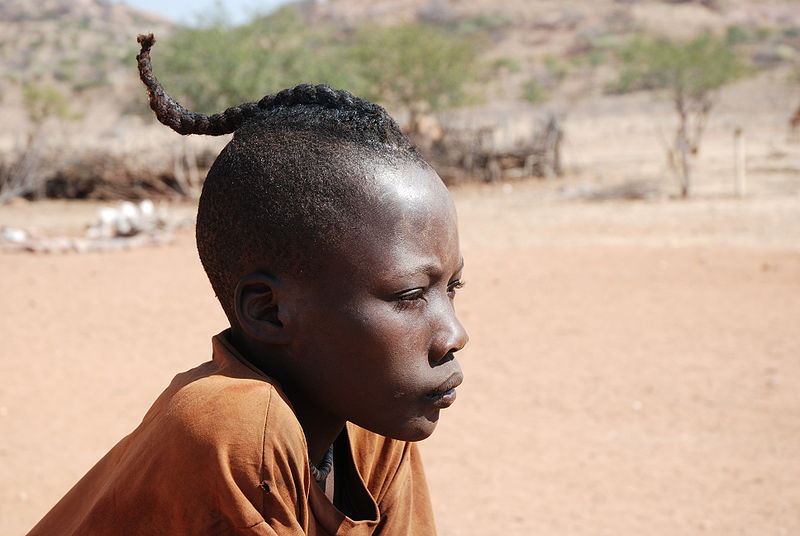In a documentary i recently watched called "Babies" the lives of several babies living around the world was recorded. For me the most intriguing life led in the documentary was the life of the Himba women in Namibia. These women live in small villages where they tend livestock to survive. What first caught my attention was the red hue in the skin of all the women. I discovered it was a mixture of otjize, a paste of butter, fat and red ochre -- sometimes scented with aromatic resin. I wondered why they put this on themselves each day thinking it protected them from harmful UV rays, but what I discovered was far more enticing. The Himba say it's an aesthetic practice, a ritual of applying this otjize every morning, and it represents the earth's rich red color, and the blood that symbolizes life. The otjize is also a standard of beauty in Himba culture. This practice exemplifies the strong traditions the Himba hold on to, including the tradition of villages being led by a chief.
The Himba are culturally strong people who have survived many droughts and wars hardly changing their calm way of life. In their society women are inferior to men who spend the days taking care of the legal trials, political tasks, cattle and other livestock while women will perform more intensive work such as carrying water to the village and constructing the cone-shaped structures they inhabit made of saplings covered in mud and dung.
Another interesting aspect of their culture is their way of dressing. It is customary for women to be topless and wear a mini skirt they make out of goat skins themselves. Often you will see adult women wearing ankle bracelets to protect their ankles from snake bites. Himba men usually wear loincloths, again made out of an animal's skin, but when modern clothes are available, men are the ones to receive them.
Another aspect of Himba culture is the way they wear their hair. Hair in Himba culture symbolizes marital status. Children start off with two plaited braids away from there face, and when girls reach puberty the braids are moved to the front of their face, and can be multiple braids at that time. When a woman is married she has to wear a headdress with streams of braided hair which are colored and set into shape with otjize. Single men wear a single plaited braid set backwards to their necks and when they are married they wear a turban with many otjize-soaked plaits.
Single Himba boy:

The Himba are culturally strong people who have survived many droughts and wars hardly changing their calm way of life. In their society women are inferior to men who spend the days taking care of the legal trials, political tasks, cattle and other livestock while women will perform more intensive work such as carrying water to the village and constructing the cone-shaped structures they inhabit made of saplings covered in mud and dung.
Another interesting aspect of their culture is their way of dressing. It is customary for women to be topless and wear a mini skirt they make out of goat skins themselves. Often you will see adult women wearing ankle bracelets to protect their ankles from snake bites. Himba men usually wear loincloths, again made out of an animal's skin, but when modern clothes are available, men are the ones to receive them.
Another aspect of Himba culture is the way they wear their hair. Hair in Himba culture symbolizes marital status. Children start off with two plaited braids away from there face, and when girls reach puberty the braids are moved to the front of their face, and can be multiple braids at that time. When a woman is married she has to wear a headdress with streams of braided hair which are colored and set into shape with otjize. Single men wear a single plaited braid set backwards to their necks and when they are married they wear a turban with many otjize-soaked plaits.
Single Himba boy:


No comments:
Post a Comment